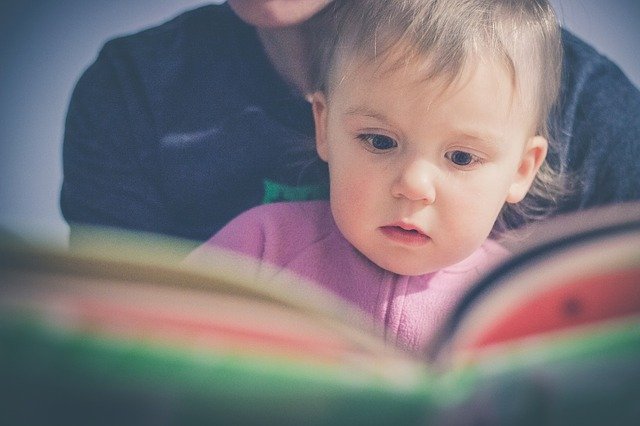*This post does not contain affiliate links *
A quiet book is a great first book for young children. It’s a fun way to practice new skills and can be a great addition to your sensory play.
Also known as a busy book this is a great gift to keep your little one entertained with different activities on each page.
The success of a quiet book is finding the right kind of activities for your child’s skill level and by the end of this post, you’ll have a good idea about what’s right for you.
What Is a Quiet Book?
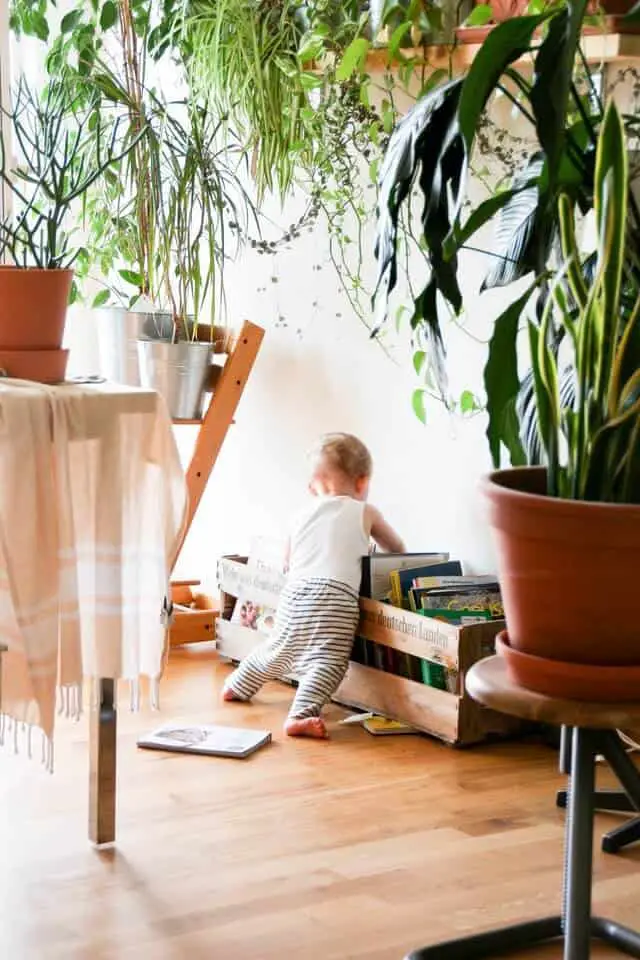
A quiet book is an activity book for children from around 9 months up to 6 years old. Each page is concentrated on a different skill and interaction, although the book may have an overall theme.
The different textures of the materials used provide a great sensory experience for small children.
Quiet books are loved by parents because they inspire imaginative play and creativity. As well as this quiet books help with the following:
- Develop fine motor skills and a pincer grasp
- Practice problem solving
- Practice memory
They provide an alternative method to educational activities at home that don’t involve screen time.
They are great for situations where you need to keep your child entertained and quiet, like while traveling or waiting at the doctor’s office.
For the ultimate personal experience, you can craft your child their own quiet book, or if this is beyond your level of crafting skill you can buy quiet books from a number of places online (more on this later.)
What Are Quiet Books Made From?
Quiet books can be made from a variety of materials such as fabric, yarn, felt, paper, or wood. For a 1 year old, I would recommend a soft book with no small pieces.
This post is focused on a cloth book made from fabric scraps and felt board.
If you are interested in making a book using crochet or knitting, please see this fantastic blog full of quiet book patterns.
How Do I Choose The Best Quiet Book For My Child?
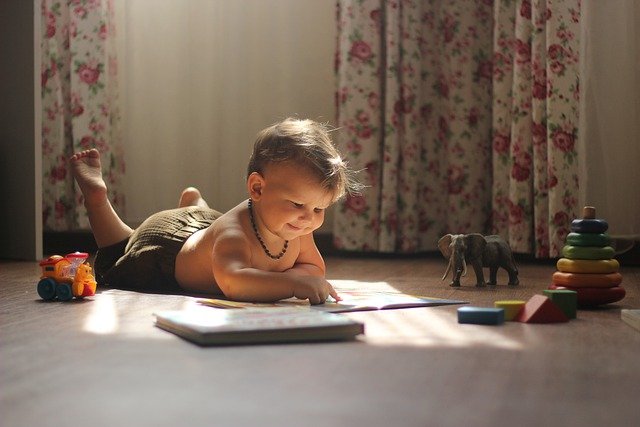
As quiet books are designed for children with a wide range of dexterity it’s important to consider the type of quiet book that will suit your child.
Whether you intend to buy or make a quiet book, ask yourself these questions first to ensure you make the right choices for your child.
1) How Old Is Your Child?
This question is critical as you want your quiet book to contain developmentally appropriate skills.
Aim for pages that represent real-life activities, a good example of this for a one-year-old is doing up zips and velcro straps to prepare them for starting to help dress themselves. Another example is sensory pages that crinkle, rattle, or jingle. These are a great way to keep your little person engaged and entertained.
You may also want to include activities your child can’t quite manage yet (like a multi-button flap) so the book can grow with them as their skills develop.
The overall size of the book will also be impacted by the age of your child as tiny hands will become overwhelmed with pages that are too large. Check out Ooni Crafts for simple tips on sizing your pages.
For a 1-year-old you will also want to exclude any small detachable pieces that could pose a choking hazard.
2) What Colors Does Your Child Like?
Your 1-year-old may not have a favorite color just yet, but they will have started to show some preferences. Children of this age typically like bright and high contrast colors such as the primary colors red, yellow, and blue.
Another option is to choose colors that your child may already have some attachment to, such as mimicking the colors of their favorite toy.
This way the book will already feel familiar to them, and you may find they enjoy playing with the book and toy together.
3) What Are Your Child’s Interests?
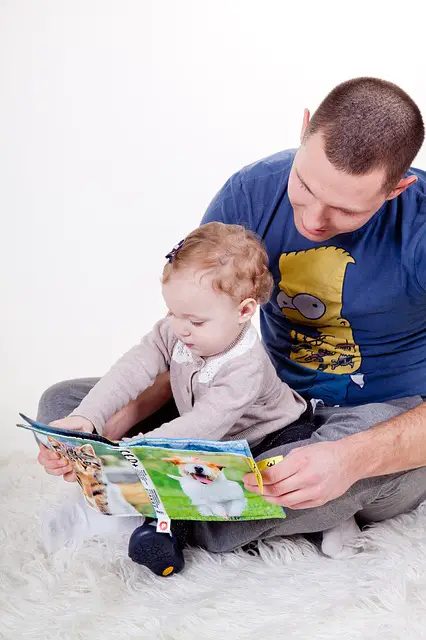
All children will naturally enjoy some activities more than others. If you can incorporate this into your child’s book then it’s certain to go down well.
For example, toddlers enjoy repetitive actions like sliding a object back and forth, so in a toddler book, you could include a shape on a string that moves from one end of the page to the other.
Older children into numbers or spelling will enjoy activities with velcro letters and numbers they can practice with.
4) What Is Your Budget For The Project?
As quiet books take a considerable amount of time to make and are usually handmade they can be fairly expensive to purchase, however, if you’re new to crafting buying all the supplies you need from scratch may work out quite pricey as well.
It’s important to set a budget first as it’s easy to get carried away making bigger and bigger plans.
How Do I Make A Quiet Book?
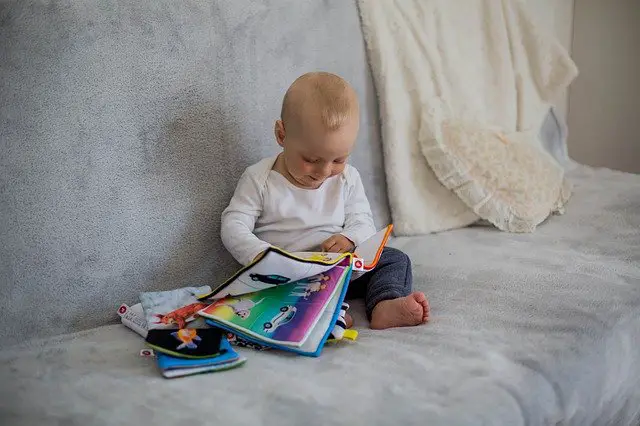
Making a quiet book is a fun project, and it’s sure to become one of your child’s favorite books.
It can be quite time-consuming to cut and sew each individual component however if you enjoy this type of craft it will be incredibly rewarding to see the level of joy your child will get from a toy you created.
Here’s some advice to get you started:
Planning Your Quiet Book
It’s tempting to just dive in and start sewing your ideas, but trust me, while you may be able to do this with practice you will regret not planning your first quiet book.
It’s a great idea to sketch out each page of the book as this will allow you to make a detailed list of the supplies you will need.
Mark your color choices and print off any templates you find on the internet to make sure you have as much information as possible before starting the project. There are some great ideas on Cuppa Cocoa to get you started.
Decide the order your pages will go in, and make sure the right pages are in the correct order before you start.
Here is a list of additional questions you should answer before starting, as well as some suggested answers:
- How many pages will you make in total?
At least 8 internal pages are recommended. A front and back page with 3 additional inserts will give your child enough pages to turn to feel like a real book.
- How will you bind your book together?
You must decide on your binding method before beginning to sew as you need to make sure you leave sufficient room on every page for the method you select. You can sew your pages together or use binder rings. Binder rings give you the flexibility to add to the book later or take single pages out, but it is more complicated to do. Check out My Craft Quiet Book for a detailed step-by-step guide on how to sew your pages or their other tutorial here you could customize for ring binders.
- How will you close your book?
Keeping the book closed while it is not in use will help protect the pages from being damaged. Use something simple like magnet strips, velcro straps, or a large button so your child is able to open and close the book themselves. They will love the sense of independence this gives!
- Will the book be easily carried?
1 year olds love to carry things around from room to room. Consider including a strap or handle so your baby can carry their own book around.
Don’t let striving for perfection prevent you from finishing the book (or starting in the first place!). Your child will not notice if your stitching is a bit wonky or you made a few mistakes. As long as it’s baby safe they will have so much fun playing with their interactive book.
What Materials And Tools Will I Need?
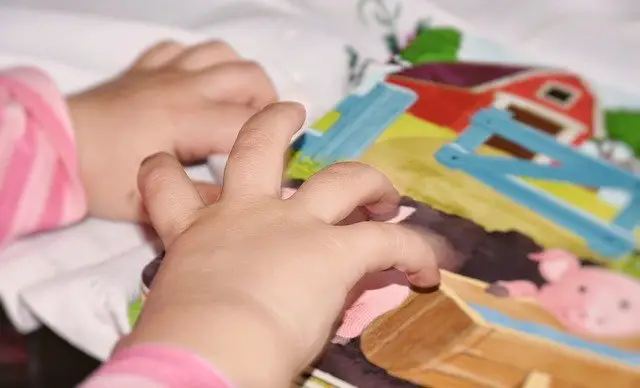
Once you have sketched your pages you should be able to compile a detailed list of the materials you will need for your project.
To help you further, here is a list of materials and supplies you are likely to need to create a fabric book.
There is a free checklist at the bottom with everything listed and space for you to add your own items as well so you can print it off and take it to the craft store with you.
- A Sewing Machine and/or Sewing Needles. It is possible to hand sew the entire quiet book, but this will take a lot of time. If you’re comfortable with a sewing machine you can utilize this and greatly speed up the process. Even if your skills are limited use the machine for bigger, less delicate tasks like edging your pages.
- Scissors. Make sure you use sharp scissors or you will find it very difficult to cut exact lines and small shapes. Micro-tip scissors are perfect for cutting felts and fabric. Please do not use your fabric scissors to cut paper as this will cause them to become very blunt.
- Freezer Paper. Freezer paper can be a huge timesaver when it comes to cutting. It is transparent enough to be used as tracing paper to trace patterns, or it can even be cut to printer paper size and then patterns can be printed on it directly.
- Felt. Felt can be either acrylic, blended wool, or 100% wool. Acrylic sheets are usually the cheapest option and are widely stocked so you should be able to find them in your local craft store. If you are making an entire quiet book it’s a good idea to stock up on a variety of colors so you have plenty of choices. Felt is a great choice for delicate shapes as it doesn’t fray. This also makes it really versatile and it can be attached with a variety of stitches although blanket stitch and back stitch are most commonly used.
- Fabric. You will need sheets of fabric to make the pages of your book if you do not intend to use felt. Make sure you have enough fabric to remake a page if you make a mistake.
- Scraps. Save your felt scraps and fabric scraps. They may come in handy later in the project for embellishments or if not they can be used for stuffing areas in the book to make them stick out.
- Thread. You will need a thread to sew with. DMC embroidery thread looks good and can be used as a single strand of embroidery thread. High contrast thread colors look visually appealing, but any flaws or mistakes will be more obvious. If you are less experienced with the sewing machine I recommend using a thread color that is similar to the fabric or felt that you are stitching to avoid this.
- Hot Glue Gun. This is optional but can be really helpful when working with felt. A small dot of glue in the center of a piece will hold it in place while you sew around the edges. You may opt to use glue in place of stitches for older children, but this is not recommended for toddler quiet books as they are more likely to try to remove small parts and place them in their mouths.
- Sewing Clips or Pins. These are important for keeping fabrics or felt stable while you sew. Both are convenient to pop in a sewing kit and carry around, but a sewing clip like Clover Wonder Clips is a little easier to use and safer if you have a 1-year-old crawling around. You will find these useful for any sewing project, so they are a worthwhile investment.
- Eyelets and binder rings. If you want to bind your book with rings then you will need an eyelet to make reinforced holes in your pages and binder rings to attach the pages together
- Embellishments. You will need these to make a variety of activities in your pages. For a baby quiet book you will want to stock up on buttons, shoelaces, ribbons, zips, lace, and velcro. Your sketch plan should be able to guide what embellishments you need to purchase – but its always sensible to have a plan B as well.
Where Do I Buy A Quiet Book?
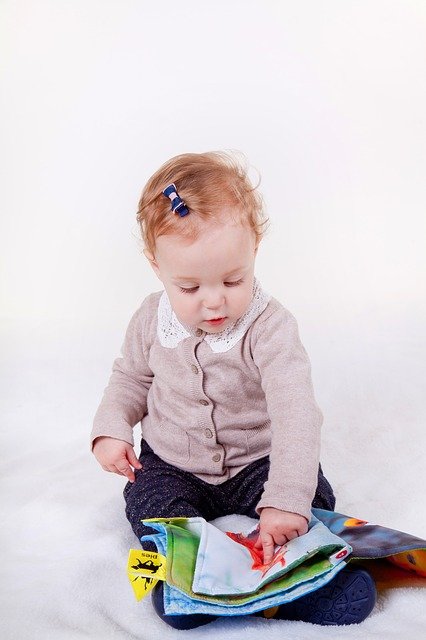
There’s no denying it, making a good quiet book is a lot of work and is likely to take you a long time.
It can be incredibly rewarding for some parents, but if you’re time-poor it’s unlikely to be a feasible option. Why not consider buying a book instead?
Etsy is a great resource for homemade crafts like this.
If you do decide to take the plunge here are a few things for you to check first:
- Good reviews – the first thing to do is take a detailed look at the reviews of your seller. Lots of other happy customers is a good indicator of high quality. Buyers will often post photos allowing you to see real-life photos of what your book will look like.
- The seller’s communication – For best results communicate your needs with the seller before committing to the purchase. This is essential if you want your book highly customized or to add new quiet book pages the seller isn’t offering.
- Personalization Options – There will likely be an extra cost involved for this, but adding personalization to a page of the quiet book is a really nice touch. Usually this will be your child name on the first page of the book.
Did you buy a quiet book or make your own? Let me know in the comments if your baby loved playing with it.
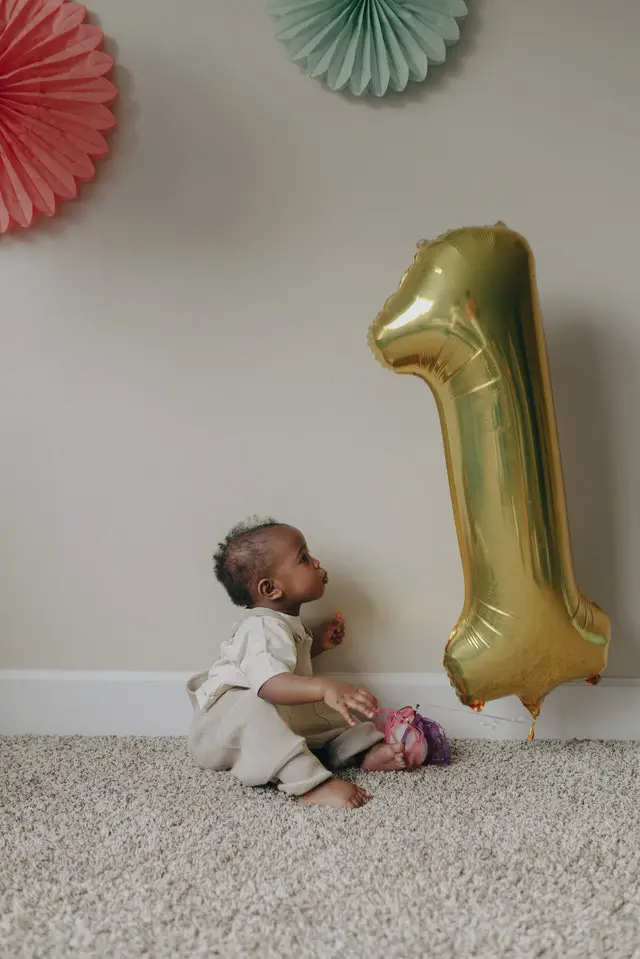
You may be interested in my other articles for One-Year-Olds:
19 Time Capsule Ideas for your Baby’s First Birthday

